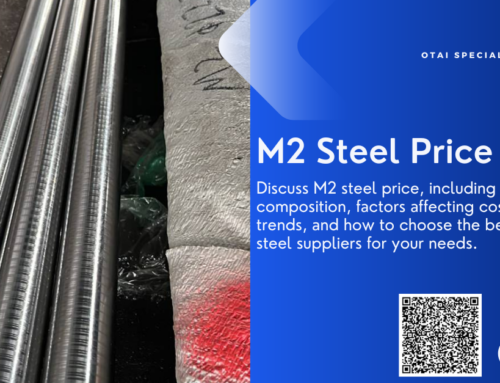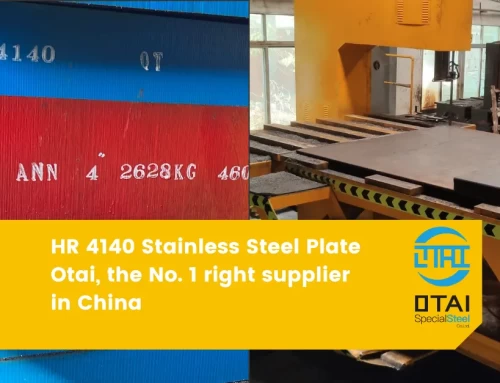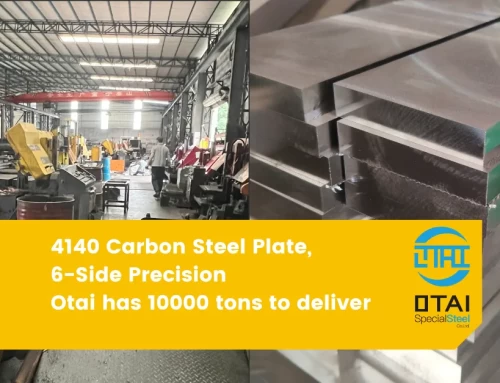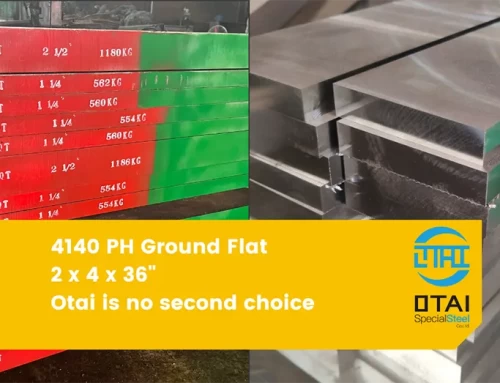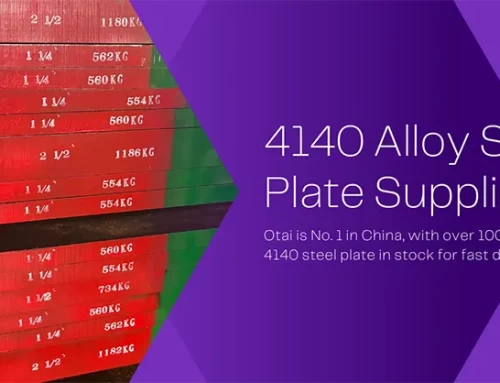If you are looking for a steel that combines strength, toughness, and weldability, you might want to consider 4130 alloy steel. This alloy is widely used for various applications, such as gears, fasteners, structural components, aircraft parts, and more. In this post, we will explain what 4130 steel is, what its properties are, how it is heat treated, and what its common uses are. We will also answer some frequently asked questions about this alloy.
What is 4130 Alloy Steel?
4130 steel is a low-carbon alloy steel that contains chromium and molybdenum as its main alloying elements. It has a density of 7.85 g/cm3 (0.284 lb/in3) and benefits from heat-treatment hardening. It is also known as AISI 4130 or SAE 4130, which are standards set by the American Iron and Steel Institute (AISI) and the Society of Automotive Engineers (SAE) to classify steels based on their chemical composition and mechanical properties.
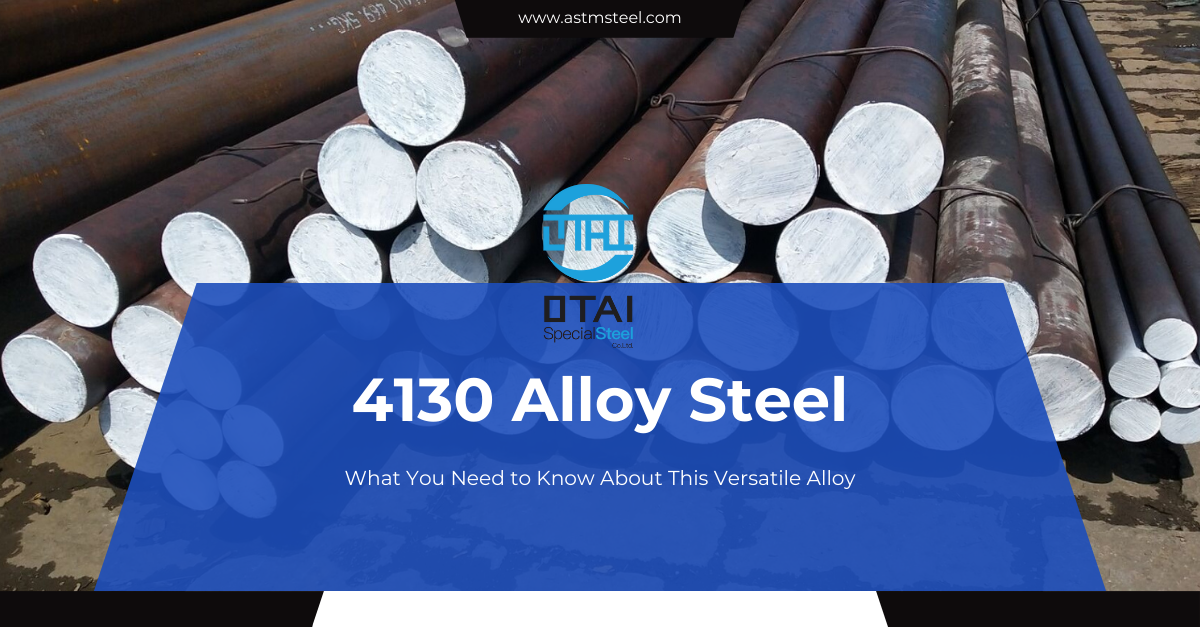
The name 4130 comes from the following rules:
- The first digit (4) indicates that it is a molybdenum steel.
- The second digit (1) indicates that it has a low carbon content (around 0.3%).
- The last two digits (30) indicate the approximate percentage of chromium (around 1%)
The exact chemical composition of 4130 alloy steel is as follows:
- Carbon: 0.28 – 0.33
- Chromium: 0.8 – 1.1%
- Manganese: 0.40 – 0.60%
- Molybdenum: 0.15 – 0.25%
- Phosphorus: ≤ 0.035%
- Silicon: 0.15 – 0.35%
- Sulphur: ≤ 0.04%
What are the Properties of 4130 Steel?
4130 steel has excellent mechanical properties that make it suitable for many applications. Some of these properties are:
- Strength: 4130 steel has a high tensile strength of about 670 MPa (97,200 psi) and a yield strength of about 435 MPa (63,100 psi). This means that it can withstand high stresses and strains without breaking or deforming.
- Toughness: 4130 steel has a high impact toughness of about 80 J/cm2 (45 ft-lb/in2). This means that it can absorb a lot of energy before fracturing or cracking.
- Hardness: 4130 steel has a moderate hardness of about Rockwell B92 or Rockwell C22. This means that it can resist wear and abrasion well.
- Weldability: 4130 steel is an exceptional welding steel, being weldable in all commercial methods. It can be joined by arc welding, gas welding, resistance welding, brazing, or soldering.
- Machinability: 4130 steel is readily machined in its normalized or tempered condition. It can be cut, drilled, turned, milled, or shaped easily with conventional tools and machines.
- Formability: 4130 steel is easily cold worked, hot worked, and forged. It can be bent, stretched, hammered, or pressed into various shapes and forms.
How is 4130 Steel Heat Treated?
4130 steel is a heat-treatable alloy, which means that its properties can be improved by applying different heating and cooling cycles. The most common heat treatments for 4130 alloy steel are:
- Annealing: This process involves heating the steel to a temperature of about 830°C (1525°F) and holding it there for a period of time, then cooling it slowly in the furnace. This softens the steel and improves its ductility and machinability.
- Normalizing: This process involves heating the steel to a temperature of about 900°C (1650°F) and holding it there for a period of time, then cooling it in air. This refines the grain structure and improves the strength and toughness of the steel.
- Hardening: This process involves heating the steel to a temperature of about 870°C (1600°F) and holding it there for a period of time, then quenching it in oil or water . This increases the hardness and wear resistance of the steel.
- Tempering: This process involves reheating the hardened steel to a lower temperature of about 200°C to 650°C (400°F to 1200°F) and holding it there for a period of time, then cooling it in air . This reduces the brittleness and improves the impact toughness of the steel.
The exact temperature and time for each heat treatment depend on the desired properties and specifications of the final product.
What are the Common Uses of 4130 Alloy Steel?
4130 steel is widely used for various applications that require high strength, toughness, and weldability. Some of these applications are:
- Gears: you can use 4130 steel to make gears for automotive, aerospace, industrial, and military applications . It can withstand high torque and speed without wearing out or breaking.
- Fasteners: you can make bolts, nuts, screws, studs, pins, rivets, and other fasteners for various industries . It can resist corrosion and fatigue well.
- Structural components: you could make frames, brackets, supports, beams, columns, trusses, and other structural components for buildings, bridges, cranes, towers, and other structures . It can bear high loads and stresses without buckling or bending.
- Aircraft parts: 4130 steel is used to make landing gear, fuselage, wings, tail, engine mounts, and other parts for aircrafts . It can withstand high temperatures and pressures without cracking or deforming.
- Sports equipment: you can also use 4130 steel to make bicycle frames, golf club shafts, skateboards, roller skates, and other sports equipment. It can provide light weight and durability without compromising performance.
Conclusion
In conclusion, 4130 alloy steel is a low-carbon alloy steel that contains chromium and molybdenum as its main alloying elements. It has excellent mechanical properties that make it suitable for many applications that require high strength, toughness, and weldability. It can be heat treated to improve its properties further and can be easily machined and formed into various shapes and forms.
If you are interested in buying or using 4130 steel for your project, please contact us today. We are a professional and reliable steel supplier that can provide you with high-quality and affordable steel products and services.
FAQs
Here are some frequently asked questions about 4130 steel:
Q: What is the difference between 4130 alloy steel and 4140 steel?
A: Both are chromium-molybdenum alloy steels, but they have different carbon contents. 4140 steel has a higher carbon content than 4130 steel, which makes it harder and stronger, but also more brittle and less weldable.
Q: How do you weld 4130 steel?
A: You can weld 4130 steel using any commercial welding method, such as arc welding, gas welding, resistance welding, brazing, or soldering. However, you need to preheat and postheat the welded area to avoid cracking or embrittlement.
Q: How do you harden 4130 steel?
A: You can harden 4130 steel by heating it to a temperature of about 870°C (1600°F) and holding it there for a period of time, then quenching it in oil or water. This increases the hardness and wear resistance of the steel.
Q: How do you temper 4130 steel?
A: You can temper hardened 4130 steel by reheating it to a lower temperature of about 200°C to 650°C (400°F to 1200°F) and holding it there for a period of time, then cooling it in air. This reduces the brittleness and improves the impact toughness of the steel.
Q: Where can I buy 4130 steel?
A: You can buy 4130 steel from us at Otai Special steel. We are a leading supplier of high-quality and affordable steel products for various industries. We can provide you with customized sizes and shapes of steel plates, bars, tubes, pipes, sheets, or customized sizes per drawings.

